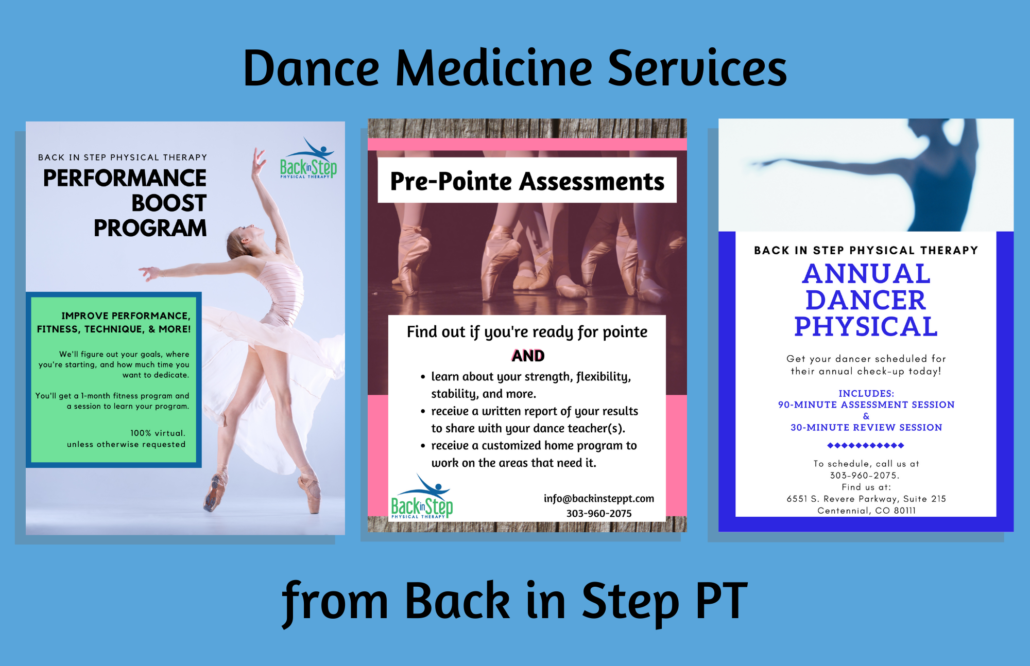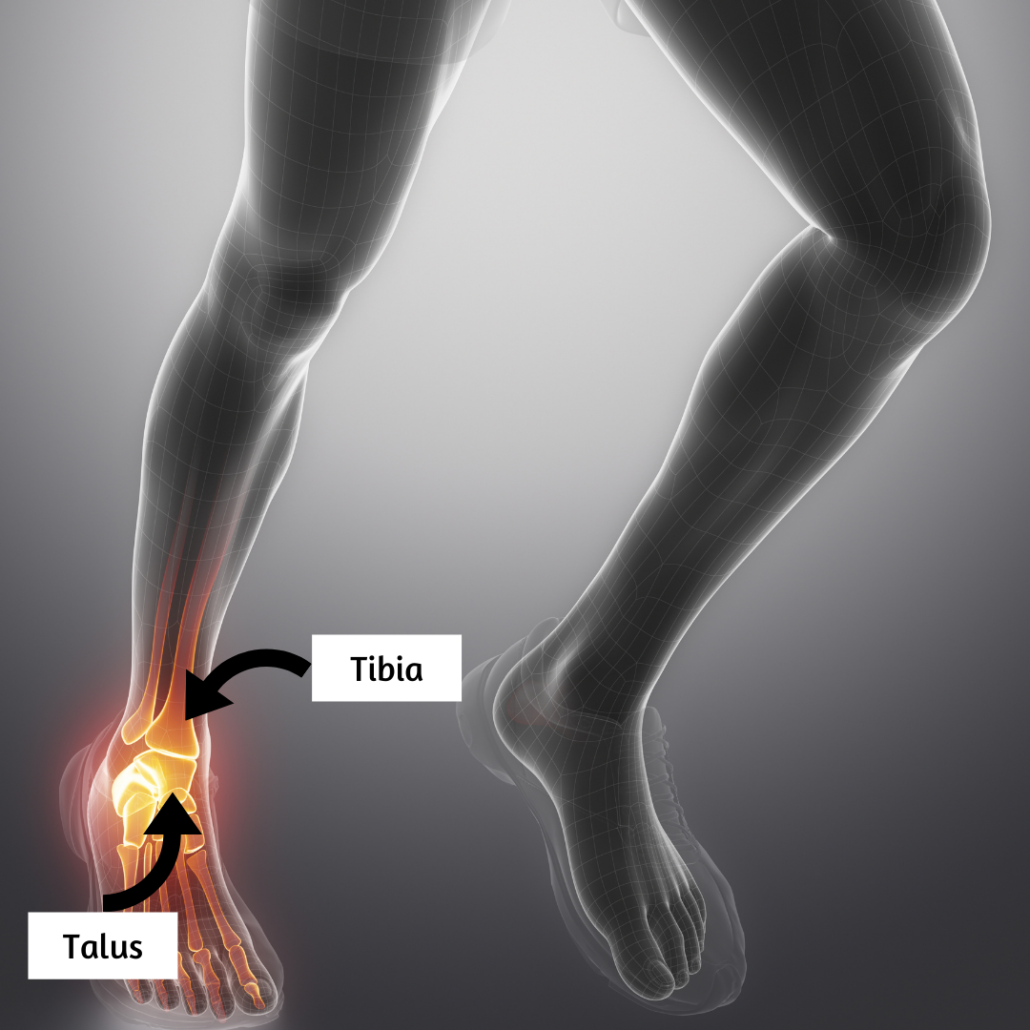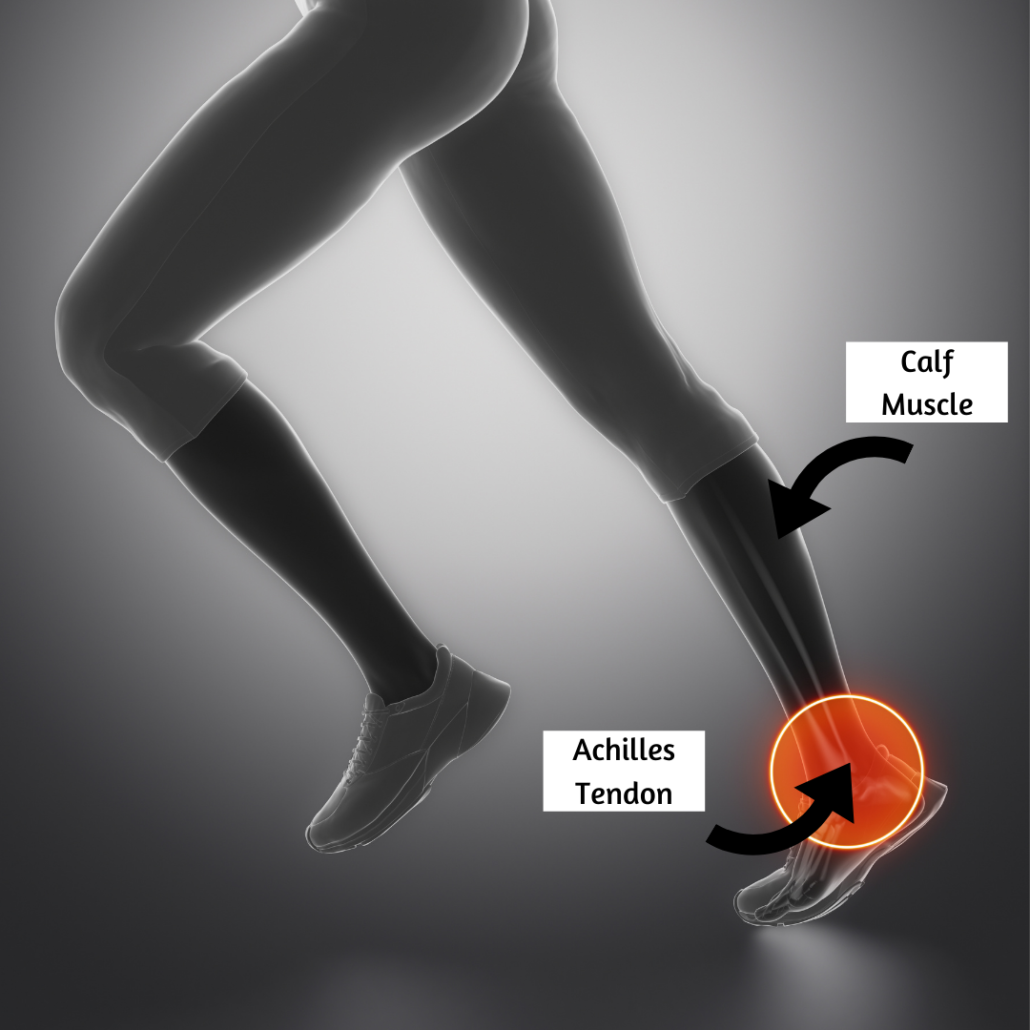Posts
Is Your Dancer Ready for Pointe? A Guide for Parents
/in The Performing Arts, Uncategorized /by Dr. Alyssa Arms, PT, DPT, OCS It seems like one of the biggest things for young dancers growing up is the dream of dancing en pointe. And why not?! You get to have the beautiful shoes, the gorgeous tutus, and the chance to develop a whole new set of skills.
It seems like one of the biggest things for young dancers growing up is the dream of dancing en pointe. And why not?! You get to have the beautiful shoes, the gorgeous tutus, and the chance to develop a whole new set of skills.
This dream of dancing en pointe is great and a good goal to have, but some dancers or dance parents may be eager to start pointework before their teacher has made the recommendation. It may feel unfair that a dancer doesn’t get to start yet. Or maybe you’re not sure why the teacher is/isn’t giving a recommendation.
The goal of this post is to talk a little bit about what your dancer needs to have, from a medical perspective, to safely dance en pointe. We’ll also be addressing some of the myths around readiness and additional considerations.
Myth #1: You can automatically move to pointe once you reach a certain age.
FACT: Age is only one small part of everything that should be considered. Most recommendations from medical research suggest that the dancer is at least 12 years old – or maybe 11, in certain specific circumstances.
Why is that? A big part of it has to do with development of bones and joints.
We know that the bones of the foot finish developing someting between the late teens to early twenties, but it varies a lot from person to person. Besides that, we are also concerned about the dancer’s growth plates. This is the part of the bone (like the femur, or thigh bone) where a child’s growth happens. These close around 14 years old in females. We want to be closer to that age before starting pointe.
Myth #2: You can progress to pointe once you reach a certain level at your studio.
FACT: The truth is – this is partially true.
It’s not so much about reaching a certain level. This makes sense because different studios or training programs have different definitions of their levels, so it’s hard to compare from program to program.
The biggest recommendation here is actually related to amount of training. Generally, we recommend 3-4 years of ballet-specific training. This means that other dance styles or mixed classes (like a ballet/tap combo class) do not count towards that total. Some recommendations even say that it should be 3-4 years after the age of 8!
Besides the recommendation of 3-4 years, we also recommend 2-3 hours of ballet classes per week.
Myth #3: Once you’re on pointe, there no need to ever go off again, except if you have a major injury.
FACT: Of course injury or pain is an excellent reason to take a break from pointe! But we want to challenge you to think about another time when it may be beneficial.
Consider also taking a temporary break when the dancer is going through a growth spurt. During this time, the muscles and strength, as well as control and coordination, are all trying to catch up with one another. We even know that some muscles need to work up to 40% harder during this time, at least until everything is back on the same track.
During this time, dancers can focus on developing their strength and control again. They can continue working on demi-pointe and can focus on a strengthening program. Once they’re feeling more coordinated again and aren’t experiencing some of the growing pains, it can be safe to work back into their pointe work.
Hopefully this helps dispel some of the most common rumors about when dancers are or aren’t ready for pointe!
Now for some additional considerations:
-
What does the research say?
 An interesting fact: working on demi-pointe puts up to 4 times your body weight through your foot. Once you’re working on full pointe, it can put up to 12 times your body weight through your foot! That is yet another reason why it’s crucial that dancers are truly ready for pointe and not starting too early.
An interesting fact: working on demi-pointe puts up to 4 times your body weight through your foot. Once you’re working on full pointe, it can put up to 12 times your body weight through your foot! That is yet another reason why it’s crucial that dancers are truly ready for pointe and not starting too early.
There are some tests that your dance teachers and/or dance medicine professional can do to assess readiness even more specifically (and we highly recommend this).
Some easy ones to do in the studio are things like the pencil test, airplane test, topple test, and single leg sauté test.
Besides that, it’s also great to have some strength and joint motion test done, which can be done by a dance medical professional. For a very thorough assessment, we also recommend the medical professional look at things like injury history, training habits, general health, nutritional practices, and more.
-
Should my dancer get an xray to check their growth plates?
No. You may often hear this recommendation from dance instructors but research actually shows little evidence that this is helpful information. Seeing the growth plate “closed” on the xray does not necessarily mean that the bones are mature.
So if you do get the xrays done, not only is it not the most reliable information, but you’re spending money on it and your dancer is getting exposed to radiation unnecessarily.
-
When should we seek out a dance medicine professional?
If your dancer:
-
-
- is complaining of pain for longer than a week, or it is accompanied with swelling, loss of joint motion, numbness, or instability.
- has pain that wakes them up at night, is present at the start of activity, or gets worse with activity.
- seems to be frequently injured or if they seem to take a long time to recover.
- is showing an imbalance in flexibility, strength, or control from side to side.
- is hyperflexible.
-
And, of course, seek out a dance medicine professional for things like pointe readiness assessments, annual dancer physicals, injury screenings, fitness programs, and other prevention and wellness services. Find out more about ours here.

Check out our video about it on our YouTube channel!
Dancers’ Great Superpower
/in The Performing Arts, Uncategorized /by Dr. Alyssa Arms, PT, DPT, OCS Dancers are very aware of their bodies! They absolutely need this awareness for a routine either in class, rehearsal, or on stage. However, dancers tend to ignore their injuries due to the very real fear of not being able to keep doing what they love. Dancers should use their “hyperawareness of their bodies” superpower for good to ultimately prevent future, harmful dance injuries! How are they able to do this?
Dancers are very aware of their bodies! They absolutely need this awareness for a routine either in class, rehearsal, or on stage. However, dancers tend to ignore their injuries due to the very real fear of not being able to keep doing what they love. Dancers should use their “hyperawareness of their bodies” superpower for good to ultimately prevent future, harmful dance injuries! How are they able to do this?
Well, we’ll tell you!
Through education of common dance injuries, importance of dance injury prevention, and importance of seeing a dance medicine physical therapist (PT) when experiencing symptoms of these common dance related injuries, dancers can use their superpower to keep them happy and healthy and doing what they love!
Dancers are the most hardworking and dedicated athletes out there! However, this hardworking and dedicated nature is what often leads to dance related injuries. These injuries could be overuse injuries or acute injuries, resulting in dancers having to sit out for rehearsals and performances. We have a list of five of the most common dance related injuries and their signs/symptoms to look out for.
Hip Impingement 1,2
What is Hip Impingement?
Hip impingement is when the bones of the hip joint become close together due to repetitive motions dancers do in class. You have two bones that make up your hip joint: the acetabulum and head of the femur.
As the hip joint moves when doing big movements, such as grand battements, your two bones collide more with one another. This places more pressure on the hip joint and can lead to hip pain.
Superpower Sense for the signs and symptoms of hip impingement
Pain in the following positions:
-
-
- Hip flexion (i.e. when you do a battement)
- Internal rotation (i.e. when you turn in)
- Passé
- Developpé a la seconde
-
Patellofemoral pain syndrome 1,3
What is patellofemoral pain syndrome?
Patellofemoral pain syndrome, also known as “runner’s knee,” is a common knee injury leading to pain under and around the patella or “kneecap.” There are unknown causes of patellofemoral pain syndrome, but we do know that it can be due to muscle imbalance. Muscle imbalance means that one muscle surrounding the knee joint is overworking while another is underworking.
Are you a dancer who thinks they have patellofemoral pain syndrome? Well we can help! Check out this link to our Pain in the Plié program that can help dancers manage their knee pain.
Superpower Sense for the signs and symptoms of patellofemoral pain syndrome
Pain in the front or around the knee in the following positions:
-
-
- Jumping
- Pliés
- Going up stairs
-
Ankle impingement 1,4
What is ankle impingement?
Your ankle joint is made up of two major bones: distal tibia and talus. There are many different structures that surrounds this ankle joint, such as muscle, tendons, and ligaments.
Ankle impingement is pain in either the front or back of the ankle due to these surrounding structures getting compressed. This compression happens in dancers because dancers have to move their ankles through extreme motions during class, rehearsal, and performances. Maximally flexing or pointing your foot or going onto relevé on pointe throughout class can put dancers at risk of developing ankle impingement.
Superpower Sense for signs and symptoms of ankle impingement
Pain in the front of the ankle with the following positions:
-
-
- Plié
- Landing from any type of jumping movement
-
Pain in the back of the ankle with the following positions:
-
-
- Tendu
- Relevé
- Any position where the foot is maximally pointed
-
Achilles tendonitis 1
What is Achilles tendonitis?
The Achilles tendon is the tendon of the calf muscle that attaches to the heel bone, or the calcaneus. The calf muscle is responsible for pointing the foot, a controlled relevé, and “quiet” landing from a leap.
Achilles tendonitis is a common overuse injury in dancers where the Achilles tendon, or calf tendon, becomes inflamed and irritated. This could be due to excessive training or using the incorrect muscles when dancing. To learn more about preventing Achilles tendonitis and other related injuries, check out this link to our previous blog post on the hot topic of stretching before dancing.
Superpower Sense for signs and symptoms of Achilles tendonitis
Pain in the back of the ankle, just above the heel that may feel better after warm up, but worse with the following:
-
-
- Pointe work
- Jumping
- Pointing the foot
-
Stress Fracture 5
What is stress fracture?
A stress fracture means that there is a small fracture within a bone because of an increased stress to the body. Stress fractures are commonly associated with increased intensity or volume of training workload, such as several, 8 hour (or longer) rehearsals leading up to a big performance or competition. In dancers, these stress fractures occur in the bones throughout the legs, ankles, and feet. The most common stress fracture for dancers are the in metatarsals, or the long bones in the middle of the feet.
Superpower Sense for signs and symptoms of stress fracture
-
- Pain during dancing but subsides with rest
- Pain gradually worsening over time when continuing to put weight through the painful area
- Swelling and tenderness around the painful area
Go Out and Conquer that Stage!
Now that you’re familiar with some of the most common dance related injuries, it is time to put your superpower to the test!
Make sure to keep an eye out for the signs and symptoms of these injuries so that you can take good care of your body. Don’t let that injury linger or think that the injury will just disappear. Seeing a dance specialist PT will help you manage your pain sooner and help you understand more ways you can protect your body from injury now and in the future. So, start using that superpower of understanding your body to keep on killing it in today’s and future classes, rehearsals, and performances!
Give us a call at Back in Step Physical Therapy to get started on your journey to wellness with a dance medicine specialist.
Also check our our Dancer’s Kit!
Guest Blog by Marissa Holliday, SPT
Marissa Holliday is a second year Student Physical Therapist at the University of Colorado-Anschutz Medical Campus. Marissa has a background in various styles of dance (jazz, contemporary, lyrical, tap, ballet, and hip hop) and is no stranger to dance injuries. She currently works as an intern for Back in Step Physical Therapy, and is excited to learn more from Dr. Alyssa Arms on working with this amazing dancer population as a future physical therapist.
References
- Krysten Malcolm DPT. 7 Common Dance Injuries (and How to Prevent Them). neurotour. https://www.neurotour.com/blog/7-common-dance-injuries. Accessed November 28, 2020.
- Hip Impingement. Johns Hopkins Medicine. https://www.hopkinsmedicine.org/health/conditions-and-diseases/hip-impingement. Accessed November 28, 2020.
- Paul Ingraham • updated Nov 14 2020. What Works for Patellofemoral Pain? What Doesn’t? Why? www.PainScience.com. https://www.painscience.com/tutorials/patellofemoral-pain-syndrome.php. Published November 14, 2020. Accessed November 28, 2020.
- Ankle Impingement. Physiopedia. https://www.physio-pedia.com/Ankle_Impingement. Accessed November 28, 2020.
- Stress Fractures. Physiopedia. https://physio-pedia.com/Stress_Fractures?utm_source=physiopedia. Accessed November 28, 2020.
Back In Step Physical Therapy
6551 S Revere Pkwy, Ste 215
Centennial, CO 80111
(303) 960-2075
info@backinsteppt.com





